Peter MALONE
Saturday, 18 September 2021 19:48
Shirley
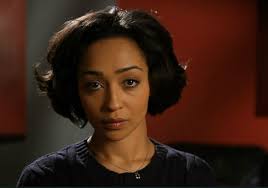
SHIRLEY
UK, 2011, 70 minutes, Colour.
Ruth Negga, Lesley Sharp, Charlie Creed- Miles, Henry Lloyd- Hughes.
Directed by Colin Neague.
Shirley is a brief telemovie, sketching the initial career of famed singer, Dame Shirley Bassey. With its brevity, it tends to sketch the outline of the career as well as the character and those to whom she relates.
Shirley Bassey was born in Wales of mixed race, her mother being English. Her father is sentenced to jail for sexual offences and her mother has to bring up her seven children in dire circumstances. Shirley wants to be a singer from a very young age and was always encouraged by her mother. She auditioned and was taken up by entrepreneur Mike Sullivan. There was a complication in so far as she had a child and was unmarried and this was kept secret while her sister and mother brought up the child. Eventually this became public through the media.
After making hard choices, Shirley goes to Mike Sullivan and he trains her not only in singing but in her manner and taste – with the result that she became rather snobbish in her attitudes and dealing with people as well is in her accent. In fact, she became rather unpleasant in many ways, eagerly assuming the life of a star.
The further complication in her life was her relationship with Kevin Hume, a director, who took over her career but was not successful in promoting her. Then she discovered that he was homosexual. She had another child, was open with the press, separated from her husband and for several decades maintained a high-profile career as a singer.
She is played by Ruth Negga and Mike Sullivan is played by Charlie Creed- Miles.
1. A brief biography of a celebrated star? The outline of her life? The indication of her talent? Her struggles? Her performances? Her private life, her family, her mother, her child, her manager, her husband?
2. Sufficient time to portray Shirley Bassey and give insight into her character and life?
3. Wales, the 1930s and 40s, Glasgow and its theatre, London and performing venues, Australia?
4. The songs included in the film, especially Stormy Weather? Songs included, songs omitted?
5. The indication of life in Wales in the 1930s, Eliza, her husband going to jail, sexual offences, the children and mother moving, managing, the new man in the family’s life and Shirley accepting him as her father? Her singing in the pub and getting two shillings? Her mother borrowing from her? The indication of lifestyle during the war years?
6. Shirley wanting to be a singer, her mother always encouraging her? The framework of the film with Shirley dressed for performance and her mother with her?
7. The decision to go for an audition, unlikely appearance, Mike Sullivan and his reaction, listening to her, taking her on? Shirley’s apprehensions yet ambition? Her pregnancy, the birth of the child, the decisions about the child, not making it known, Iris looking after her, her mother supporting her, her going to see Sullivan?
8. The training, singing, poise, audience rapport, his teaching her to be a lady, cutlery and manners? Her liking this kind of life, seeing herself as a star?
9. Her career, impressing the crowds in Glasgow, the good reviews, singing in London, Jack Hilton coming to hear her, the various performances, visiting Australia?
10. The public life, the revelation about her daughter? The audience seeing her with phone calls and meeting her daughter?
11. Her meeting Kevin Hume, his background, attentive to her, her believing him, pitting him against Mike Sullivan? The marriage? His not furthering her career, her discovering him with another man? Her decision to save the marriage, the press conference, her baby? Her sending him away?
12. Unlikely beginnings, talent and breaks, the change in personality, her taking stock of herself, her further career and success?
Published in Movie Reviews
Published in
Movie Reviews
Tagged under
Saturday, 18 September 2021 19:48
Jane Doe: The Ties that Bind
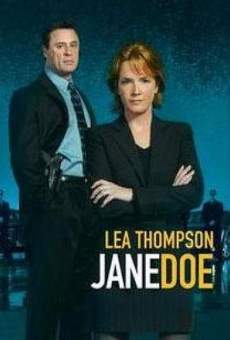
JANE DOE: THE TIES THAT BIND
US, 2007, 90 minutes, Cover.Colour.
Lea Thompson, Joe Penny, William R.Moses, Zac Shada, Jessie Schram, Robert Caradine.
Directed by James con snore.
The Ties That Bind is the seventh in the Jane Doe telemovie series starring Lea Thompson as a former agent, now married and a consultant to a government agency. At first, she did not reveal her status to her family, they thinking she was a consultant for preparing puzzles. However, ultimately her husband found out what she was doing. Which he accepted and there are always domestic scenes in the Jane Doe films, especially the clashes between son and daughter, he clever, she snobbish.
This is a film about identities, a murder taking place while the seeming accused had a perfect alibi. Frank Darnell, Joe Penny, calls in Cathy and, while initially puzzled – and not thinking of the twin – they come to this conclusion and track down through the parish priest and the mother of the children.
Robert Caradine plays the role of the brothers, one a successful businessman, the other a petty criminal who likes to perform in local musicals. The trouble is that there was another child, adopted by a very devout mother, very strict, who has an effect on her son that he becomes jealous of his other brothers and it is he who is the criminal. There is a finale with one of those stand-offs with the three men each pleading that they are the innocent ones.
The series offers easy going crime thriller and investigation with the pleasant Lea Thompson.
1. The popularity of the series, case studies, solving puzzles?
2. The American city, the details of home life, of investigations, of business, of the different classes in the American city? The musical score?
3. The usual domestic sequences, the pleasant husband, the clever son, the snobbish sister, their interactions? Developments as characters over the series?
4. Cathy, as Jane Doe, a life at home, managing the family, discipline, her being called by Frank to solve the mysteries?
5. Frank Darnell, his work, personality, relationship with Cathy, as an investigator?
6. The opening with the office, the businessmen leading, re-entering, the murder, the CCTV, the man at the desk, alibis?
7. The businessman, his alibi in the restaurant, his wife, leaving for a time, the plausibility that he went back to do the murder, his relationship with his mistress, giving testimony? Timing, characters, the wife and the mistress?
8. His arrest, in prison, the possibilities of his doing the murder or not?
9. The fingerprints, the discovery of a twin, the identification of the murderer?
10. The killer, going to the priest in confession? Cathy and Frank going to the church, the discussions, the information, the role of the priest, no documentation at the time, the fact that there were twins, going to visit the mother?
11. The mother, having to give up the children? The businessmen and his success? The second son and his petty crime, the contact with his mother, her warning him by phone, his acting, his alibi by being in the play?
12. The realisation that there must be a third child, the use of credit cards, antiquities, his expertise?
13. His mother, protection, devout, the priest, who influence on the boy?
14. The melodrama, the confrontations, the three connecting, the meetings, the threats, Cathy endangered? Frank coming to the scene?
15. The three men, each claiming to be innocent, the confrontation, the truth?
16. An entertaining murder case, and the psychological repercussions of the triplets, the envy of others, the influence of the mother and the adoptive mothers?
Published in Movie Reviews
Published in
Movie Reviews
Tagged under
Saturday, 18 September 2021 19:48
Ghost Ship/ 2002

GHOST SHIP
US, 2002, 91 minutes, Colour.
Juliana Margulies, Gabriel Byrne, Ron Eldard, Isaiah Washington, Alex Demetriades, Karl Urban, Desmond Harrington. Emily Browning.
Directed by Steve Beck.
Ghost Ship is exactly what it says. There are some references to the Marie Celeste (although the young workers of 2000 have never heard of it). This time it is 1962 and a luxury Italian liner is cruising with 600 guests. They are wealthy, they are at a ball, a singer performing – when some wiring becomes loose, creates an effect, which then cuts through the people (literally) on the dance floor, killing them all in some gory visual detail. However, one little girl is not killed in the same way and remains on the ship for 40 years.
We are then shown a group from a salvage ship, presided over by Gabriel Byrne, with Juliana Margulies as a skilful assistant. Since the film was shot in Australia, Alex Demetriades and Karl Urban appear, with the very young Emily Browning as the little girl. There are also some Americans in the cast, including Isaiah Washington and Ron Eldard.
We see the skills of the group, their celebrating when approached by a young man, a pilot with information about a ship to be salvaged. They take it on and find the ghost ship, which also has a great deal of gold on board. As might be expected, the group agree to the salvage, and, one by one, they are killed off. The woman encounters the little ghost girl who is able to save her. The main revelation is that the young man who organised the salvage is in fact a hunter of souls, trying to find his quota to hand over and roaming the world and the seas until he is successful. This is a more interesting variation on “supernatural” scenarios.
1. The blend of horror elements with the salvaging of ships at sea?
2. The scenes at sea, the small salvage boat and its interiors, engines? The large liner, during its voyage, in the flashbacks? After 40 years, deterioration?
3. The plausibility of this kind of ghost story, the theory about the seeker of souls and destruction of passengers on ships? The little girl surviving and helping? Though dead?
4. The special effects for the ship, the explosions, the attempts to fix the ship? The special effects for the deaths of the passengers? For the appearance of the girl, the captain?
5. The musical score, the singer and her performance in the salon?
6. The opening with the salvage work, success, the celebration, the approach by the young man, his deals, their agreeing to go, his coming with them?
7. The search, the discovery of the liner? Going aboard, seeing its condition after 40 years? The possibility for repairs? The dangers with the deterioration? The finding of the gold and its impact on them? Epps seeing the little girl, the effect on her, seeing her again and again, talking, the explanations?
8. The ghosts, the captain and his talking to the salvage master? The singer and her seductive leading on of Greer? Destroying him?
9. The characters of the crew, banter, altercations, skills in their work? The decisions about the gold? Santos and his death? Munder, his friend? Dodge and his desperate behaviour, towards Epps and the gold, murder?
10. The captain, his decisions, his death? Epps alone, with the little girl, the attacks, explosions, the rescue?
11. The insertion of the flashbacks, the reminder of the affluent passengers, the repetition of the death sequence?
12. The young man, his place on the ship, the finding of the gold, his interactions and clashes? The revelation of who he was? The collector of souls? His finally being seen as Epps was rescued?
Published in Movie Reviews
Published in
Movie Reviews
Tagged under
Saturday, 18 September 2021 19:48
Conquest of the Air
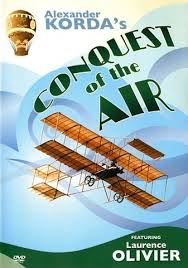
CONQUEST OF THE AIR
UK, 1940, 70 minutes, Black and white.
Laurence Olivier, John Abbott,
Directed by Zoltan Korda, Alexander Esway, John Monk Saunders, Alexander Shaw, Donald Taylor.
Conquest of the Air is an imaginative documentary from the 1930s, with the date in some sources as 1936. But references are made to action and characters in 1938 as well as the coming of World War II. It ends with a brief speech by Winston Churchill. Which may mean that the film was begun in the mid 30s, further edited and added to and made public at the outbreak of World War II with the Churchill speech.
The first part of the film is voice-over documentary with images from human explorations of flight, beginning with Icarus and his failure, through various theorists, to some disastrous exhibitionists like Simon Magus performing before Nero and falling to his death, a pattern repeated throughout the Middle Ages. There are some interesting mini-dramas from the Middle Ages including the attempts of Franciscan friar, Roger Bacon, to pursue philosophy and engineering for purposes of flight only to be condemned by his superior to 10 years confinement to his cell without books. This kind of speculation continues through the later Middle Ages, to the Renaissance, especially with Leonardo da Vinci and one of his disciples wanting to test a machine without the master’s permission only to finish in disaster. Other monks also pursued experiments, some dying like a superior wanting to get quickly to a conference in Paris and one surviving and giving lectures in Rome.
With the age of reason and Enlightenment, there were many pursuing the possibilities of human flight, one speaker explaining to the audience that of his own strengths, a man could not fly. The next development was the hot air balloons and some drama of various flights in France.
With the 19th century, the documentary becomes more explicit on this, the attempts at flight as well as the issues of mechanics and engineering, many examples being shown, especially the German,, who was influential on the Wright brothers. There is a good sequence reminding us of the achievement of the Wright brothers.
Then it became the period of ‘those magnificent men in their flying machines’, competitions, especially between France and England, all kinds of different flying machines, some absurd, some particularly inventive. But it was World War I which hastened the development of planes and their capabilities, the film offering vivid images from World War I, including the Red Baron, and the realisation of the destructive power of dropping bombs from planes.
However, it is the 1920s which shows the enormous developments, especially for elite pilots, men and women, including Jean Batten and Amy Johnson, who experimented with long flights. Tribute is paid to these flyers and to their vision, for long haul flights like those of Charles Lindberg or Ross Smith and Kingsford Smith, moving into the 30s with the development of planes for mail delivery, for cargo, and eventually, for luxury flights for paying passengers. Quite a deal of footage is devoted to these developments of the 1930s, contemporary images and newsreel documentary footage. Attention is also given to Zeppelin and the development of the Zeppelins with some graphic photography of the crash and burning of the Hindenburg.
The film is interesting in terms of the history of flight. Contemporary audiences can go back to the perspective of the 1930s and the amazement that it was in 1903 that the Wright brothers flew in North Carolina, that it was only 11 years later that planes were employed in World War I, that 20 years after their experiments there was commercial flying, and within 30 years extraordinary developments in design, physics, engineering.
While the later material is from actual footage, with some scenes reconstructed, during the first part of the film up to the end of the 19th century, the film-makers have designed a series of tableau vivants, some very brief but elaborately staged, creating a sense of period. Sometimes there is dialogue as in the Nero scene with Simon Magus, the condemnation of Roger Bacon, some dialogue with Leonardo da Vinci (filmed from the back) and an Italian sequence which stars Laurence Olivier and a French sequence about hot air balloons featuring John Abbott. Many character actors, some to emerge as stars in the British industry, take on small roles and receive no credits.
5 directors are credited with direction. This was an ambitious project for the 1930s and is worth looking at for information as well as for learning something about the cinema styles of the period.
Published in Movie Reviews
Published in
Movie Reviews
Tagged under
Saturday, 18 September 2021 19:48
Latin Lovers
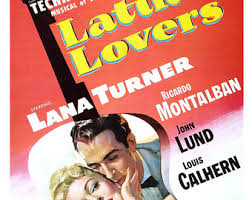
LATIN LOVERS
US, 1953, 106 minutes, Colour.
Lana Turner Ricardo Montalban, John Lund, Louis Calhern, Jean Hagan, Eduard Franz, Beulah Bondi, Rita Moreno.
Directed by the Mervyn le Roy.
Latin Lovers is a quite sumptuous MGM film of 1953, romance with the touch of comedy. It is a star vehicle for Lana Turner (and her costumes and dresses). Her leading man, the Latin lover, is played by Ricardo Montalbano. John Lund appears as a stuffy millionaire who is the alternate husband. There is a bright supporting cast led by Louis Calhern as a roué grandfather, Jean Hagan as Lana Turner’s secretary, Eduard Franz as a psychiatrist, and veteran Beulah Bondi as a psychiatrist as well. And the young girl dancing the samba with Ricardo Montalban is, in fact, Rita Moreno.
This is an affluent world, Lana Turner as a billionaire as is John Lund. But she is unsure about marrying him and accompanies him to Brazil where the air is different and she is immediately charmed by the owner of horses at his ranch. The rest is somewhat predictable although enjoyable in its way, with quite a number of witty lines from Isabel Lenart, to add to the entertainment. The problem is what man would marry a woman who has $37 million?
Whether the final solution in terms of motivation to marriage is credible, is a question that romantics will not worry about before the happy ending, to the tune of a very catchy song, dancing to a samba, which recurs with its Latin lilt.
1. An MGM romance of the 1950s? Colour, style, production values, cast, music, costumes and decor?
2. The total, the tone, Roberto and Brazil, the contrast between the American businessman and his style? The romantic versus the non-romantic?
3. New York, the city, business offices, apartments? The contrast with Brazil, the city, hotels, the open spaces, the horses and the ranch, an affluent
Brazil? The musical score, the main theme, lyrics, dancing, the lilt?
4. Norah, age, beauty, style, coming to the office, chairing the meeting, her strong decisions?
5. Norah going to the psychiatrist, her confusion, worried about marriage, whether she loved Paul or not? The personality of the psychiatrist, his wife phoning him, analysing why the child chose to swallow something, the later scenes at home with Norah’s phone calls, his wife and her sardonic remarks? Her later going to another psychiatrist?
6. Paul, millionaire, shipping and railroads, his stiff manner, demanding, not emotional or romantic? Wanting to marry Norah? Friendship with her, taking her dancing? His going to his psychiatrist, her listening, advice to take things slowly? His putting this into practice, controlling himself? His polo playing, his continued injuries? The decision to go to Brazil?
7. Norah, hearing about Brazil, deciding to go, with her secretary, the secretary and her devotion? The hotel, ringing Paul, the invitation to dinner, his being injured again? Going to the ranch, being bored? seeing Roberto on the horse? Following him into the stable, his kissing her? The effect? Her coming back in the night, his singing and dancing, the samba, his demonstration with the girl, dancing with Norah? Norah completely being in love? Having t Paul to his dinner guest?
8. The grandfather, debonair, his style and interests, wit, charm? His encouraging Roberto?
9. Norah and her doubts, about the money, not telling Roberto until later, her suspicions? The grandfather and his response? Asking Paul for his advice? Ever-ready with his counsel?
10. Roberto, romance, songs, playing polo, his attitude towards the money? Accepting it? Making Norah more suspicious? Her decision to give everything away? Roberto’s reaction? Grandfather’s reaction?
11. Norah and her continually ringing the psychiatrist? Her going to the engagement announcement, being upset, leaving? Roberto and his giving up, his grandfather’s criticism?
12. The secretary, her love for Paul, pursuing him? Norah’s gift of the wardrobe?
13. Money being the problem of the person who had it, Norah giving it all to him, it being his problem? romantic ending?
Published in Movie Reviews
Published in
Movie Reviews
Tagged under
Saturday, 18 September 2021 19:48
Harrigan's Kid
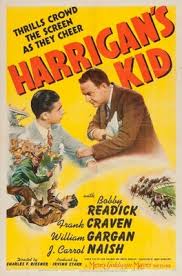
HARRIGAN’S KID
US, 1943, 80 minutes, Black and white.
Frank Craven, Bobby Readick, William Gargan, J Carroll Naish.
Directed by Charles Reiser.
Harrigan’s Kid is a small budget 1943 film more like that of a Warner Brothers second feature rather than a film from MGM, which it is. But it is a star vehicle for veteran actor, Frank Craven. The central character is a tough jockey, something of Dead End Kid, played by Bobby Readick who made only one other film, The Canterville Ghost. William Gargan plays a former jockey who has fallen on hard times but has rescued the young jockey from the streets and helped train him. J.Carroll Naish has a role as a wheeler dealer in the racing industry.
Bobby Readick is both irritating and credible enough as the young angry jockey. However, he has a good heart because he loves horses over people but, with the help of Harrigan who trained him and told him how to be a tricky jockey which gets him into trouble, he becomes the protégé of the trainer, Garnett, played by Frank Craven. There are many ups and downs in the young man’s career, his clashes with fellow jockeys, the temptation to fix races – but all is well at the end, except for a death scene with William Gargan which, unfortunately, is played ludicrously.(not intentionally).
The film was directed by Charles Reiser, who directed Charlie Chaplin, Abbott and Costello and the Marx Bros in The Big Store.
1. An enjoyable racing film of the 1940s? Pre-budget, the-cast? Yet a feel for the racing industry of the time?
2. The black and white photography, the race sequences? Musical score?
3. The title, the focus on Harrigan? Harrigan and his growing older, his past success as champion jockey, his knowing the ropes, his finding Benny, helping him, training him, Benny using the tricks and being called to order by the authorities? His selling Benny’s contract to Garnett, his hopes for him? The dealings with Jed? His advice to Benny, to go back to Garnett, to do everything he was told, yet take instructions from Harrigan in the Derby? His admiration for Benny, the financial entanglements with Jed, Benny going to see him before the race, his wanting Benny to lose, listening to Benny, Benny’s change of heart, supporting him, the end of the race, Jed pushing him over the balcony, the death scene – and filled with bathos rather than pathos?
4. Benny, his age, tough, from the streets, slinging off at everyone, his admiration for Harrigan and obeying him? His love for the horse? The sale of the horse? His career as a jockey, using tricks, called before the authorities? Warned? His contract sold to Garnett? His arrival, the reaction of the other jockeys, his arrogance? They’re sending him to Garnet room? His fight with Mackie? His friendship with Skip? Teaching him how to count the seconds, to start a race, Skip’s accident, hospital? The reaction of the other jockeys? His decision to leave? Passing the stable, his horse giving birth and his persisting? Time away from the stables? Talking with Harrigan, the decision to return, keeping everything in order, in order to take Harrigan’s orders in the races? But Garnett and his support of Benny, acting as a father-figure, taking him to see Skip in hospital, the jobs, the foal being called after him? His writing? Reconciling with the other jockeys?
5. The Derby, his visiting Harrigan, his determination to win, the race itself, the interfering jockey, the victory? But the sadness of Harrigan’s death?
6. Boys Town kind of film, and Benny and his transition from tough guy to responsible jockey?
Published in Movie Reviews
Published in
Movie Reviews
Tagged under
Saturday, 18 September 2021 19:48
Jane Doe. The Wrong Face
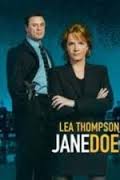
JANE DOE: THE WRONG FACE
US, 2005, 90 minutes, Colour.
Lea Thompson, Jack Penny, Jessie Schram, Jon Rubinstein, Roxana Ghazal, Ray Wise, Mike Starr.
Directed by Mark Griffiths.
Jane Doe is one of the earliest in the serious stirring Lea Thompson. She is a former agent, Cathy Davis, who is now happily married with teenage children. Jack Penny plays an investigative agent who is called in by other agencies and police forces for difficult cases. It is at that stage that he calls on Cathy, with her professional name Jane Doe, whose family thinks the job is solving puzzles.
This film involves an international drug dealer, his wanting to get rid of the aspiring DA, Jon Rubinstein, and arranges the abduction of his wife. The puzzle is who exactly organised the abduction and how it was carried out. There is also the mystery of the young woman who was placed in the situation of the woman abducted. The accused has a widely lawyer who is backing the aspiring DA in his campaign. He is played by Ray Wise.
With Jane Doe using intelligence and puzzle-solving, the case is closed satisfactorily.
1. The continued popularity of the Jane Doe series? An interesting, if easy, case to solve? The personality of Jane Doe, scenes with her family, being employed by Frank Darnell? The California settings – sunshine rather than gloom?
2. Settings, California, homes, offices, the police? Mansions of the wealthy? Seedier premises? The desert landscapes? The musical score?
3. The opening of the case, the young man reporting to the drug lord, his being killed? The deals, the international connections? The interference of the prosecutor? His being targeted? The arrogance of the dealer?
4. Cathy at home, the squabbles between her children, her easy-going husband? Domestic problems, the young boy’s date, his sister looking down on him? The makeover of the young girl going on the date? the boy? Cathy and having to go out, to solve puzzles? The love of her husband?
5. Frank Darnell, the case, going to the building site, confronting Jackson, his employing former prisoners? The arrest? The discussions in the prison with the prosecutor, with Jackson’s lawyer? Jackson firing the lawyer? Frank calling in Cathy?
6. The prosecutor, his wife, the plastic surgery, her being transported from the rest home, the abduction, the young girl escaping in the car? The 72 hours threat to drop all charges?
7. Kramer, private investigator, working for the dealer, substituting the girl for the prosecutor’s wife, keeping her in the house, her wanting to leave, promising not to tell anyone the truth? Cathy and Frank visiting the house, the interview, finding the women’s magazine? The death of the girl, Frank and Cathy going to the site of the body, identifying her as a model, Cathy going to the agent, the interview with him, taking the document?
8. Cathy and suspicions of Jackson, going to the building site, stealing the document? Her going to the nursing home, the interview with the nurse and not being able to help, her sapphire jewellery and its expense? Interviewing the night nurse, his being sacked, going to interview him, playing basketball, going to his home, getting information, offering him the interview for a job? Talking with Wilbur, his being mentally challenged, yet his observations, the information about the wheelchair and the need for oil? Cathy putting the pieces together?
9. The party for the prosecutor’s campaign, the lawyer hosting it, Frank going as a guest, Cathy in disguise, going upstairs, finding the wife, the discussions with the dealer, with the lawyer, everything being taped? The arrests? The roof of the prosecutor?
10. And Cathy going home happy evening with her husband? The continuing series?
Published in Movie Reviews
Published in
Movie Reviews
Tagged under
Saturday, 18 September 2021 19:48
Mansfield Park
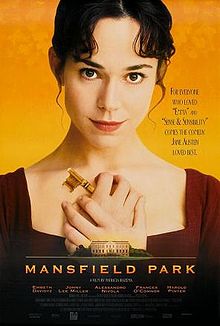
MANSFIELD PARK
UK, 1999, minutes, Colour.
Frances O ’Connor, Jonny Lee Miller, Alessandro Nivola, Embeth Davidtz, Harold Pinter, Lindsay Duncan, Sheila Gish, Hugh Bonneville.
Directed by Patricia Roszema.
Mansfield Park was released at a time of popularity for Jane Austen stories: the television series of Pride and Prejudice with Colin Firth and Jennifer Ehle, Emma with Gwynneth Paltrow, the Oscar-winning Sense and Sensibility with Emma Thompson, Persuasion with Ciaran Hinds. At this time and in the following years there were television versions of each of Jane Austen’s novels as well as the film of Pride and Prejudice with Keira Knightley and Matthew Macfadyen.
This film has the look of the Regency period, Mansfield Park itself, costumes and decor, the poorer area of Portsmouth. It has the atmosphere of aristocratic families, the older son going into business, the younger son destined to be a clergyman. It has the arranged marriages, the disasters of such marriages, as well is the independence and free-thinking of young women at the time who also were writers. Class distinction is very evident.
But, the film has a different feel from the other versions of Jane Austen, perhaps a more evidently robust and direct treatment of the story and characters. The cast is quite interesting, Frances O’ Connor being very vigorous and independent minded as Fanny Price. Jonny Lee Miller is rather subdued as the younger son, preparing to be a clergyman, loving Fanny Price but not realising it. A surprise in the cast is playwright, Harold Pinter, as the father, with Lindsay Duncan as Lady Bertram as well is playing her sister, Mrs Price. Sheila Gish is a snobbish Aunt Norris and Hugh Bonneville is the rather dim landowner. The ambitious brother and sister, Harry and Mary Crawford, played by Alessandro Nivola and Embeth Davidtz, complicate the scene with sinister aspects lurking. James Purefoy is the older son. Of interest is the subtext about slavery, the West Indies, exploiting the slaves and the need for abolition of slavery.
The film has all the themes of Jane Austen. It was written and directed by Canadian Patricia Roszema (I Heard the Mermaids Singing).
1. The popularity of Jane Austen novels on screen? The variety of versions? Setting up a tradition and expectations?
2. The re-creation of Jane Austen’s time, sense of place?
3. The Regency period, 1806? Costumes, the homes, the grounds, Portsmouth, the status of people in class divisions, the aristocratic family, the poor family?
4. The screen tradition, genteel, yet serious matters underlying under the surface? This version in the tradition? More active, direct, a stronger tone?
5. The use of locations, the strong cast, the musical score and the period?
6. The title, the focus on the house, Sir Richard, his wife, children? Tom and his going out into the world, in business like his father, the military, his friendship with Yates? Edmond and his destination as a clergyman? The daughters and arranged marriages – and their faces? The daughters at home quietly compared with the men?
7. The slavery themes, slavery at the time, Jane Austen’s attitude, Sir Richard and his going to the West Indies, possessing slaves and using them? Tom and the gross racist and sexist sketches of the slaves?
8. Portsmouth, the sea, the ships, Fanny and her place in the family, had been chosen to go to Mansfield Park, the wrench in leaving home, the parents letting her go because all the children and their needs? The welcome at Mansfield Park? Aunt Norris and her prejudice? Lady Bertram welcoming her but her continued drinking? Sir Richard and his patronage, his absences?
9. Penny as a strong-minded child, declaring herself on arrival at Mansfield Park? Outspoken? Edmond, playing with Fanny, the sisters, the transition to their growing up?
10. Family and her hopes, yet her limited expectations?
11. Edmund, nice, quiet, a reader? The Crawfords, his attraction to Maria, the setting her At him? Defending Fanny? Is vision of himself as a clergyman?
12. Fanny, her adult life, a place within the family, the family activities, yet her own quarters, like as servant, having no fire?
13. The Crawfords, there are intentions, shallow, conscious of position, Henry and his charm, accepted by the Bertrams, his interest in Julia, his shallowness, Fanny seeing him as a rake? Sir Thomas and he is urging of the marriage between Fanny and Henry? Henry’s attentions to Fanny? Fanny, her directness, not wanting the marriage, being blunt to Sir Thomas, who being dismissed, a return to Portsmouth? Henry, the gift of the fireworks, talking with Fanny, courting her, saying he would reform, is charming Fanny, her accepting, changing her mind? His anger? His relations with Julia, being caught in the sexual encounter, running away with Julia?
14. Mary Crawford, her presence in the family, charm, manners, with Edmond, wanting to marry him, her letters to Fanny, a consideration of Henry’s behaviour, the family meeting, her controlling the scene, setting out the scenario for everybody’s reputation to be saved, Edmond and his speech, not wanting anything to do with her? Her leaking?
15. Fanny at home, her mother and all the children, her father and welcoming, Susan and confiding in her, all the children, the bedroom on the bed, the kitchen, the meals? Henry and his presence?
16. Tom, the return home, with Yates, is becoming ill, Edmond coming to Portsmouth, urging Fanny to return? Tom’s illness, Yates abandoning him, Fanny seeing the drawings and being shocked at their racism and sexual content? Yet Fanny caring for him? The reaction of Aunt Norris?
17. Sir Thomas, his change, Julia’s return, are going to live with Aunt Norris and the irritating each other?
18. Fanny and Edmond talking, their admission of love for each other?
19. Fanny saying it all could have been different, but it wasn’t?
20. The happy ending, all’s well that ends well?
21. The audience and a Jane Austen experience?
Published in Movie Reviews
Published in
Movie Reviews
Tagged under
Saturday, 18 September 2021 19:48
Outlaw Michael Howe, The

THE OUTLAW MICHAEL HOWE
Australia, 2013, 80 minutes, Colour.
Damian Herriman, Matt Day, Brendan Cowell, Rurriway Hick.
Directed Brendan Cowell.
The Outlaw Michael Howe is a brief television movie sponsored by the Australian Broadcasting Corporation. Its setting is Tasmania in 1815, the Governor, Davey, is alcoholic and unable to manage the colony. Magistrates and other influential citizens are trying to control him. In the meantime, a group of convicts have risen up under the leadership of John Whithead supported by his loyal lieutenant, Michael Howe. Eventually John is killed and Howe takes over, with some enthusiasm for the men that he leads, even though they have to hide out in the bush. But they also make raids on the settlers’ farms which brings them into conflict with many of the landowners.
There is a subplot in which the wife of a landowner makes advances on Howe, wanting to take over his land. In this subplot there is a complication because of Howe’s involvement with an aboriginal woman, Mary.
The recreation of the period emphasises its squalor, its isolation, the difficulties with English settlers dealing with the Tasmanian countryside. It is a place of some lawlessness and violence. Eventually a new governor is appointed who tries to bring order back into the colony not.
Damon Herriman portrays Michael Howe, actors like Matt Day and the writer-director Brendan Cowell are in supporting roles. Of particular significance is the performance by Rurriway Hick as Mary.
Other films on these themes include The Last Confession of Alexander Pearce and Van Diemen’s Land.
1. Small budget Australian film, made for television? Its impact in content and style?
2. Australian history, Tasmanian history? In the 1810s? The early years of the colony, the role of the convicts, the military, the settlers, the Governor, the wealthy landowners? Oppression, cruelty? Rebellions, outlaws of leaders? Manoeuvres to outwit them?
3. The location photography, the ruggedness of the Tasmanian bush and mountains? The men and women in this terrain and context? The farms and settlements? The city of Hobart, the governor’s house, the dingy streets?
4. Sets, costumes, decor, the wealthy, the poor, dinginess, the drinking, prostitution?
5. The voice-over, Michael Howe and his origins in Yorkshire, finding himself in Tasmania, as a convict, in his situation, his rebellion, his teaming up with John, the men gathering around them, convict, poor, violent, anti-settlers, anti-government?
6. Governor Davey, inept, drinking, with the women, his advisers, the settlers, his going out to confront Carlisle, his attack on Howe off screen? The limitations of the dramatic effect and impact because of this not being visualised? The arrival of his successor, his drunken outburst, his being taken away, the failure of his governorship?
7. Howe himself, as a person, his relationship with Mary, her pregnancy? His being subordinate to John, John’s death and retrieving the body with Mary and Peter, the growing band (although budget considerations seem to have limited the number seen on-screen)? The nature of his leadership, the loyalty of the men? As symbolised by Peter?
8. Mary, the aboriginal background, her being raised by white people, her resentments, her knowledge of the land, her love for Howe, her pregnancy, her concern about the governor, about Maria Lord and her machinations, the jealousy of Maria, escaping with Howe, their being caught, her being shot, the wound to the neck, her being taken to prison, dragged along behind the cart, seeing Maria? The birth of a child, the final glimpse of her standing in the sunlight on the hill?
9. Carlisle, the settlers, wanting to get rid of Howe? The gang and their burning the forests, burning down the houses, the destruction? Maria Lord telling Howe where Carlisle and the others would be, the attack, the shootings, the burning of the house?
10. Knopwood and his place in ruling the colony, his associate? Their discussions with the governor, protecting themselves, their racist attitudes, the new Governor?
11. The band of outlaws, John and his establishing them, his ignorance, his self-assertion, his death? The loyalty to Howe? But with the bounty, the money, informers, their turning against him?
12. Peter, his loyalty to Howe, keeping him informed, Maria Lord and her twisting his attitude, the final meeting with Howe, his apology, his grief at Howe’s death?
13. Howe, his going to see the governor, the discussion, in prison, with the soldier and getting the keys, his escape? His wanting to see Mary? His being told lies about her?
14. His death, the new Governor taking command, peace in the settlement, the government wanting to get Maria Lord’s property, her absent husband, her taking his place after her moroseness of the death of her child, manipulating everyone, manipulating Howe, the sexual liaison, her pregnancy – and the final glimpse of her pregnant and the satisfaction of her having a child and her property?
15. Australian audiences and their acceptance of these stories of the settlement of Australia, outlying colonies of Britain, the changes, the convicts, the brutality, yet a foundation for the colony?
Published in Movie Reviews
Published in
Movie Reviews
Tagged under
Saturday, 18 September 2021 19:48
Gallant Blade, The
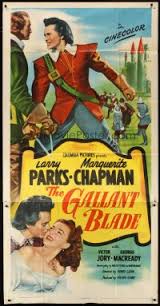
THE GALLANT BLADE
US, 1948, 81 minutes, Colour.
Larry Parks, George Macready, Marguerite Chapman, Victor Jory.
Directed by Henry Levin.
The Gallant Blade is one of several swashbuckling films made by Columbia after World War II, including Lorna Doone, The Swordsman, The Bandit of Sherwood Forest, also directed by Henry Levin.
The setting is France in the middle of the 17th century – rather Americanised by the accents of the cast. It has a swordsman hero played by Larry Parks, loyal to the general who wanted to bring France to peace after the 30 Years War – an unlikely casting of George Macready in a sympathetic role rather than as a villain. The villain this time is Victor Jory, ambitious to get his troops to invade Spain and wanting the help of the sympathetic general who sees through him and refuses. Also in the background is Marguerite Chapman as a double agent who eventually sees through the wiles of the villain and is attracted, of course, to the hero.
Standard ingredients for this kind of small-budget costume drama, which moves at a swift pace and is quite enjoyable.
1. The popularity of this kind of action adventure? Costume drama?
2. How necessary for the audience to know anything about the 30 Years War or of the situation in France and Spain in the 17th-century?
3. Colour photography, settings, costumes, decor, a sense of period? Musical score?
4. After the war, the possibilities for peace in France, the sympathetic general and his wanting to maintain peace? The loyalty of his swordsman and presenting him with the Gallant Blade?
5. The devious general, his wanting the troops, trying to persuade the general, his deceptions, his ambitions to invade Spain? His allies? His hold over Nanon and her having to act as a double agent? The scenes of banquets and dancing and the underlying tensions?
6. The hero, personality, the verve, going into action, his skills as a swordsman, exercising them? his loyalty to the general? His going undercover, those helping him, the encounter with Nanon, attracted, her sharing in his adventures, his discovery of the truth?
7. Nanon, the general’s hold over her, acting as a spy, her deceptions? A society woman, yet the dark side? With the hero, discovering the truth, risking her life, helping with the overthrow of the general?
8. Intrigues, swordfights, betrayals, soldiers, loyalties, plans of war? Entertaining ingredients for this small film?
Published in Movie Reviews
Published in
Movie Reviews
Tagged under